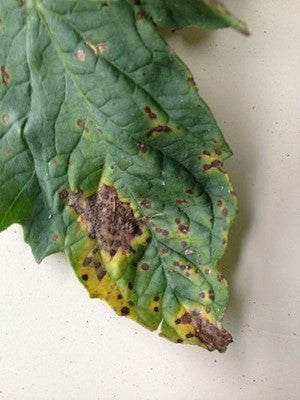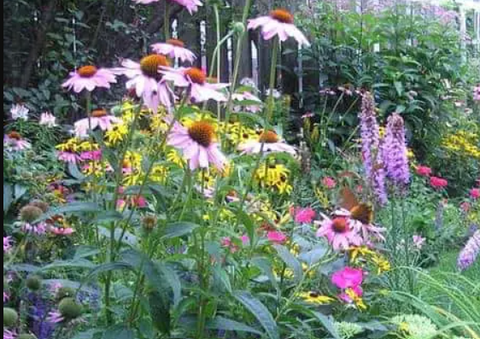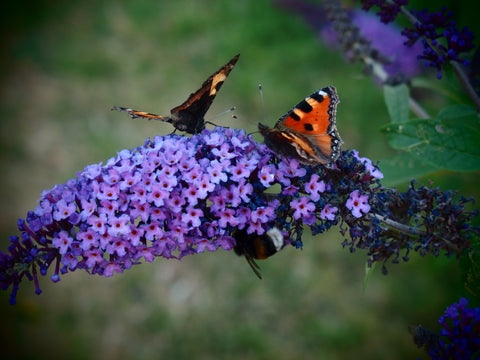Late blight or (Phytophthora infestans) is a water mold that develops during warm wet weather. To prevent the spores from gaining entry to your plants you must spray prior to infestation. When the weather indicates warm days with rain are ahead treat your plants with a fungicide. According to the University of Maryland Extension Copper, Mancozeb, or Chlorothalonil will all protect your plants. Treat plants every 7-10 days as long as conditions exist. A return to dry hot weather will slow the spread of the fungal spores. Spores can travel up to thirty miles on windy days.
Typically, the plant will develop brown spots on the leaves that appear wet. This will spread through the plant getting on the fruit and stems. Leaves usually do not fall off and the plant will eventually die. If you notice this remove it immediately and destroy the plant. Do not compost as the spores will over winter.
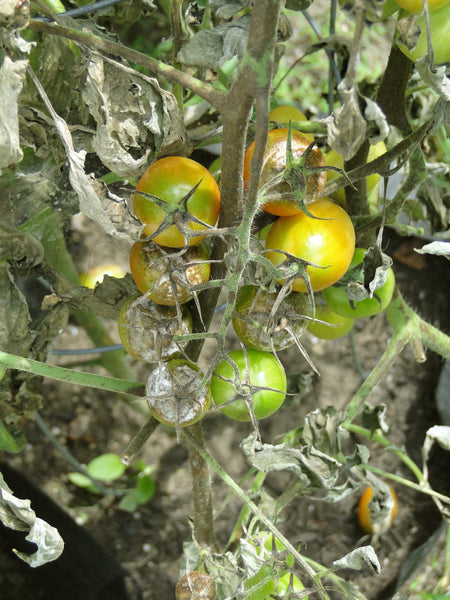
Purchase tomatoes listed as blight resistant if you have problems. Practice good gardening procedures if you have issues. Water in-ground plants from the base, so that they get the equivalent of 1-1.5 inches of rain weekly. Water in the early morning so that plants can absorb enough water to not stress especially if in heavy fruit. In hot windy weather when the plant is producing fruit increase watering to the equivalent of two or more inches of rain. Plants in containers will need more water as they dry out much quicker above ground. If the soil in your pots remains too wet, it can cause health issues. Make sure the pot or container is capable of draining.
The most common Black Spot Type fungus on tomato plants is Septoria Leaf Spot which develops during hot humid conditions and begins on the lower leaves of the plant. Small black spots develop on the leaf surface and expand with yellow rings around them. They will spread upward on the plant and the leaves will fold up and turn brown. Fruit typically will not develop spots, but the health of the plant becomes compromised. Control through application of a fungicide can deter spread of the disease but once infected there is no cure.
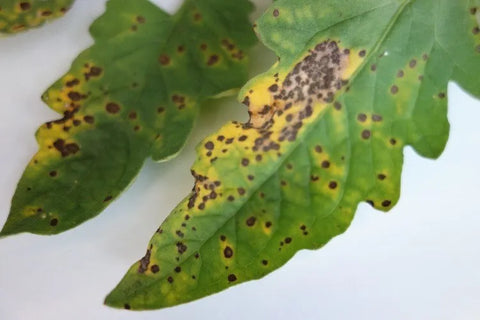
Septoria Leaf Spot. Photo Credit: Penn State Master Gardener Program
Environmental practices such as watering only from the base of the plants, allowing for good air circulation, lightly mulching around the base of your plants which can limit spores from the soil from splashing onto your plants, rotation of plants within the garden, and good clean up of debris in during winter months all help with limiting leaf spot.
Weather is a driving force as to when and how bad fungal infections can be. You should be aware of the conditions that favor the development of issues and react accordingly. Fungicides will work to prevent spores from causing problems but they need to be applied prior to infestation. In the mid-Atlantic region, typical weather patterns present in early summer indicate when you should start applying fungicides. If the weather changes from humid and damp to dry and hot you can typically lessen your guard.
Fungicides will such as Copper, Chlorothalonil, Sulfur, Mancozeb, or organic fungicides such as Bacillus amyloliquefaciens, Bacillus subtilis, and Neem Oil if used at the proper time can all help plants fight blights and leaf spots. Apply early in the morning as soon as plants have dried or in the evening, never in the heat of the day as oily sprays can make plants photosensitive.

